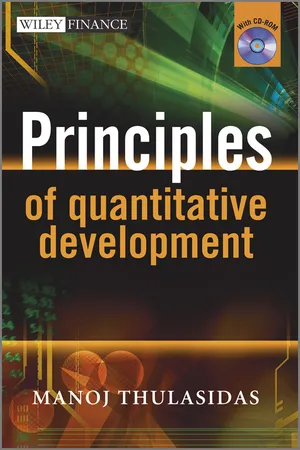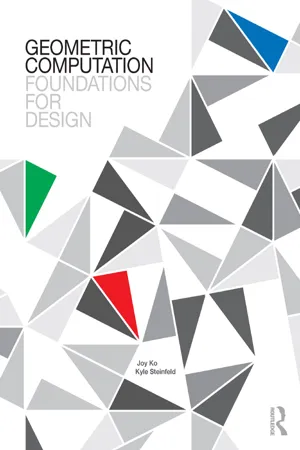Java Classes And Objects
In Java, classes are used to define the blueprint for creating objects. Objects are instances of classes and represent real-world entities. Classes encapsulate data and behavior, while objects interact with each other through methods and attributes. This object-oriented approach allows for modular and reusable code, making Java a popular choice for building complex software systems.
3 Key excerpts on "Java Classes And Objects"
- eBook - ePub
- Manoj Thulasidas(Author)
- 2012(Publication Date)
- Wiley(Publisher)
...With a {trade} class defined, the declaration Trade t ; creates an object t of the trade class. In this sense, a class is like a type and an object is a variable of the class type. The object-oriented paradigm originated out of the difficulty in maintaining large and complex programs in the conventional sequential languages. The object-oriented technology has many features that make it particularly suited for modular development in a collaborative environment with a large number of developers working together. It is an embodiment of sound software engineering principles. While we can still break the principles even in an OOP language, the lexical structure of the language makes it difficult to do so. Object-oriented languages become even more powerful by incorporating the notions of function overloading, polymorphism, inheritance, encapsulation, etc. In order to understand how the structure of an OOP language and software design principles go hand in hand, let us quickly survey the OOP terminology. 5.3.1 Basics of object-oriented methodology Class defines an object and specifies its characteristics and capabilities. An object can be anything that needs a representation in the software. This overwhelming generality makes OOP extremely powerful and unwieldy at the same time. We will soon illustrate the concept using an example of a product that can be traded. Members are elements that define the internal structure and characteristics of an object. Members can be other objects belonging to other classes. For example, in order to define a product object, we may have members such as the notional (a {double}), a pricing model (an object belonging to the class model) and so on. Methods (also called member functions) describe the capabilities of the object. They are functions within the class. For our product object, we may have a method to return its notional, which simply returns the value of the notional member...
- eBook - ePub
- Joy Ko, Kyle Steinfeld(Authors)
- 2018(Publication Date)
- Routledge(Publisher)
...Rather than focusing on how to write the logic of changing data states, OOP encourages us to think about how to model the data in the first place. This is achieved through separating generic master templates called classes (or types) from specific blocks of data that follow those templates called objects (or instances). Working under this model, objects are the elemental things that we work with as we script. They are bundles of related data and relevant procedural logic that conform to a defined template. Simple things such as numbers and letters, as well as more complex things such as points, lines, planes, and surfaces, may each be described as a class, and instantiated as objects for us to work with programmatically. As visual thinkers, we may choose to imagine each instantiated object as a graphic drawn within the appropriate space in our object model diagram. For example, when we execute the statement problem_count = 99, we are creating an object that conforms to the Integer template, and associating it with convenient and meaningful name. Similarly, the statement pt_a = Point() creates an object that conforms to the Point template, and associates it with a different name. These objects may be represented as different types of graphics in our drawings, as we can see in the nearby diagram. As is implicit in these and earlier examples, the names we choose to associate with objects can be nearly anything we like, and are called variables. fig 1.033 TWO VARIABLES AND TWO OBJECTS There are two important things to notice about this model of working, and in the diagram above. First, variables and objects are distinct. Although we may casually refer to pt_a as a “point”, it is more accurate to say that the variable pt_a references an object stored in memory that conforms to the Point type. ** This distinction may seem merely semantic in the simple scripts written so far, but will become increasingly important as our programs grow in complexity...
- eBook - ePub
- Bill Sempf, Charles Sphar, Stephen R. Davis(Authors)
- 2010(Publication Date)
- For Dummies(Publisher)
...Chapter 6: Inheritance: Is That All I Get? In This Chapter Defining one class in terms of another, more fundamental class Differentiating between is a and has a Substituting one class object for another Constructing static or instance members Including constructors in an inheritance hierarchy Invoking the base class constructor specifically O bject-oriented programming is based on four principles: the ability to control access (encapsulation), inherit from other classes, respond appropriately (polymorphism), and refer from one object to another indirectly (interfaces). Inheritance is a common concept. I am a human, except when I first wake up. I inherit certain properties from the class Human, such as my ability to converse, more or less, and my dependence on air, food, and carbohydrate-based beverages with lots of caffeine. The class Human inherits its dependencies on air, water, and nourishment from the class Mammal, which inherits from the class Animal. The ability to pass down properties is a powerful one. You can use it to describe items in an economical way. For example, if my son asks, “What’s a duck?” I can say, “It’s a bird that quacks.” Despite what you may think, that answer conveys a considerable amount of information. My son knows what a bird is, and now he knows all those same characteristics about a duck plus the duck’s additional property of “quackness.” Object-oriented languages express this inheritance relationship by allowing one class to inherit properties from another...


